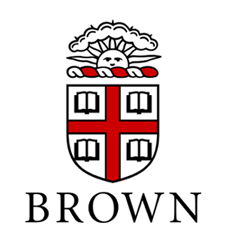Biographical note
Donald Frederick Hornig, fourteenth president of Brown University, was born in Milwaukee on March 17, 1920. He graduated from Harvard in 1940 and earned his Ph.D. in chemistry there in 1943. After working at the Woods Hole Oceanographic Institute, he became a group leader at the Los Alamos Laboratory. When the first atomic bomb was detonated Hornig was the last man to leave the 100-foot tower on which the bomb was mounted just prior to the detonation. After this experience he came to Brown as assistant professor in 1946, and was promoted to associate professor in 1949. He was director of the Metcalf Research Laboratory from 1949 to 1957. He was associate dean of the Graduate School in 1951-52 and acting dean in 1952-53. He was promoted to full professor in 1951, when he was only 31 years old. In 1957 he left for Princeton where he became chairman of the Department of Chemistry and the first to hold the Donner Chair of Science. He became a member of the Space Science Board of the National Academy of Sciences in 1959. As a scientific advisor he served four presidents of the United States. President Eisenhower appointed him to his Science Advisory Committee in 1960. He was retained by President Kennedy, who announced a week before his assassination his appointment of Hornig as his science advisor, an appointment which was honored by President Johnson. He later served as consultant-at-large to President Nixon’s Science Advisory Committee. In 1969-70 he was professor of chemistry at the University of Rochester and vice-president of Eastman Kodak Company.
When he accepted the presidency of Brown in March of 1970, he said, “My father has told me my decision is distinctly irrational. The irrational part of it is that I just plain have a simple affection for Brown, and in that sense my decision is tied directly to this University.... A lot of things we dreamed about when I was teaching here have been done ... there is just a succession of good and interesting experiments and an air of excitement as one sees it from the outside and talks to people at Brown.” He accepted the challenge of the years ahead at his inauguration on October 4, 1970, with these words, “If the private university is to continue as an important social and intellectual force, it must remain firmly in the storm center. It may mean controversy and conflict, and it may mean discomfort and dissent. Frontiers are dangerous places. The front edge of change is dangerously sharp. But it is where a great university belongs.” There was an abundance of controversy and conflict during his presidency. He inherited a budget with a projected deficit of $4.1 million dollars and the unenviable job of budget trimming. He planned by cutting back on “frills” and increasing income to balance the budget in four years, but did not plan on the energy crisis with its high fuel costs or increased operational costs caused by inflation.
Important events during Hornig’s administration were the merger of Brown and Pembroke into a fully coeducational institution in 1971 and the development of a full M.D. degree-granting medical program. The Bryant College campus was put into use, and new buildings included the List Art Building, the Sciences Library, the new swimming pool, and New Pembroke dormitory on Thayer Street. Another major but unpopular accomplishment was the improvement of Brown’s financial position through austerity in spending and a change in faculty staffing plans which staunched the “violent growth” of tenured faculty during the years immediately preceding his appointment. Although he was not generally popular with the students, Hornig understood them, stating, “If the young aren’t impatient, who will be?” He sent telegrams to President Nixon, protesting the invasion of Cambodia in 1970 and the bombing of North Vietnam in 1972. He suffered a heart attack at his desk on May 24, 1972. Provost Merton P. Stoltz served as acting president during the following summer, and Hornig was back in his office in time to address the opening convocation on September 19. At a news conference held on the day after the ending of the occupation of University Hall by minority students in the spring of 1975, Hornig said, “A generation has grown up believing that anything was possible if you set your mind to it. That generation now finds that it isn’t true. The cost of education is rising so rapidly that many don’t see how they and their families can afford it. At the same time, they see faculty and programs being cut back. They are worried, and they are frustrated, and what they see in the outside world – unemployment, depression, and so forth – does not relieve them.”
The worsening financial crisis required severe measures, and in February 1975 Hornig sent to the faculty a “white paper,” which recommended selective cutbacks, including a reduction in the size of the faculty by about 15 per cent (75 people) in the next few years. He proposed that the University decrease support for programs which did not enhance the overall standing of the University. Students protested cuts in faculty, support services, and financial aid. On July 14, 1975, Hornig tendered his resignation and announced his intention of leaving office at the end of June 1976. Interviewed after his resignation, Hornig said of his presidency, “I would not call it a satisfying experience. It was bittersweet.” When asked what he would change about his administration, he replied, “The times.” After leaving Brown, Hornig became a professor of chemistry at the Harvard School of Public Health. A symposium honoring Hornig on his 70th birthday was held at Brown on March 17, 1990.
Biographical note is drawn from Martha Mitchell's Encyclopedia Brunonia.


